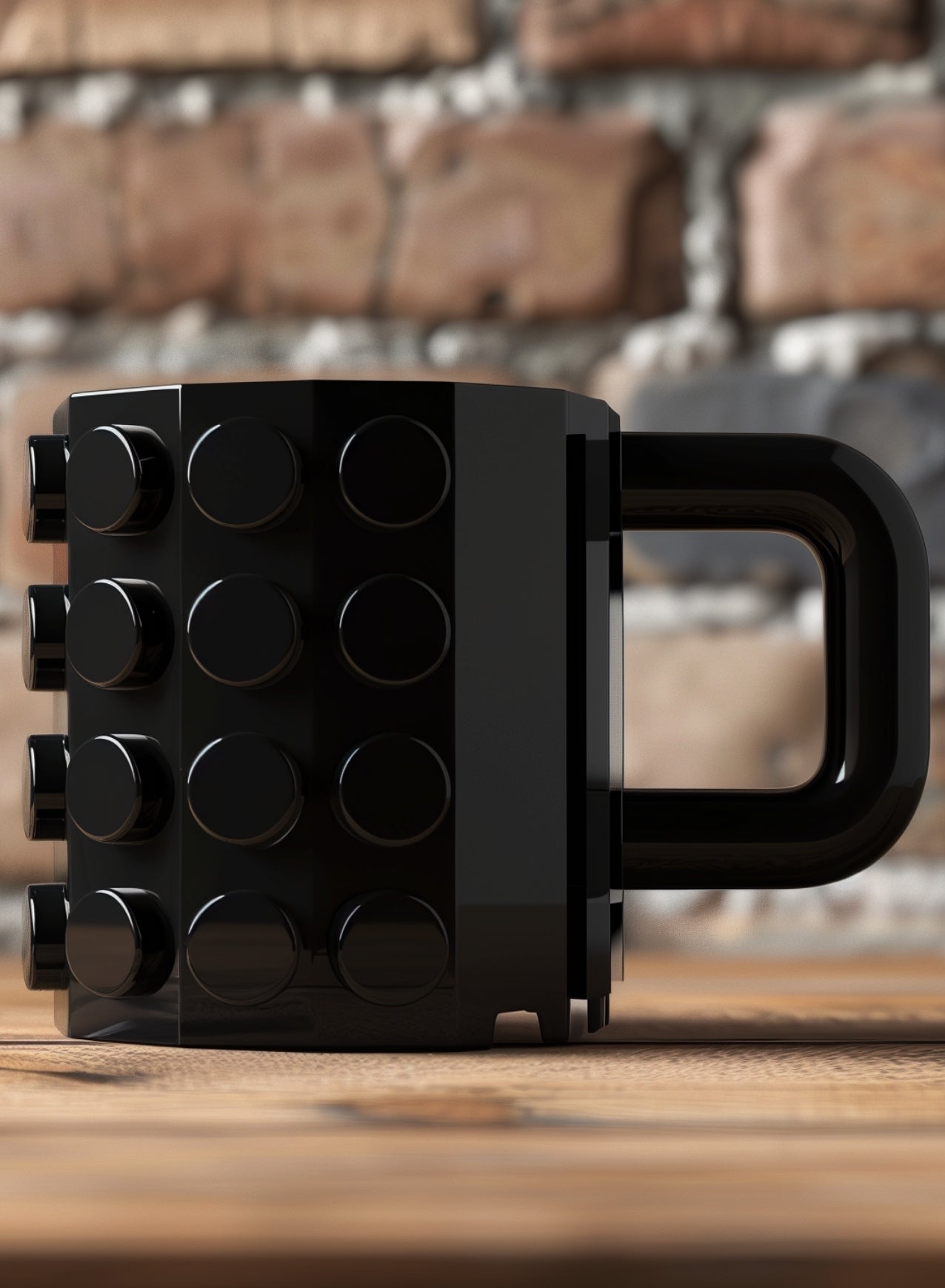How to Get Tea Stains Out of Stainless Steel Mugs: A Complete Guide
Table of Contents
- Introduction
- Understanding the Nature of Tea Stains
- Essential Cleaning Supplies for Stainless Steel Mugs
- Effective Methods for Removing Tea Stains
- Preventing Tea Stains in the Future
- Conclusion
- FAQ
Introduction
Have you ever taken a sip of your favorite tea only to notice unsightly brown stains lingering in your beloved stainless steel mug? If so, you’re not alone. Tea stains can be persistent and unsightly, marring the beauty of your drinkware. Research shows that over 80% of tea drinkers have experienced this issue at some point. As tea lovers ourselves at Prime Mugs, we understand how important it is for your beverage experience to be as enjoyable as possible, right down to the vessel you use.
Our journey began with a simple belief: that a well-crafted mug has the power to transform daily routines into cherished rituals. As we delve into the topic of removing tea stains from stainless steel mugs, we aim to provide you with the knowledge and techniques to restore your favorite mug to its original luster, enhancing the joy of every sip.
In this comprehensive guide, we will explore various cleaning methods, tips for maintaining your stainless steel mugs, and even delve into the properties that make stainless steel a preferred choice for beverage containers. By the end of this article, you'll be equipped with everything you need to know about how to get tea stains out of stainless steel mugs effectively.
Let’s embark on this journey together, discovering the best practices for maintaining the beauty and functionality of your stainless steel drinkware!
Understanding the Nature of Tea Stains
To effectively tackle tea stains, it’s essential to understand what causes them. Tea contains tannins—organic compounds that can bond with surfaces, leaving behind stubborn stains. The darker the tea, the more tannins it typically contains. For instance, black tea has a higher tannin concentration compared to green tea or herbal varieties.
The Science Behind Tannins
Tannins are a type of polyphenolic compound found in various plants, including tea leaves. They are responsible for the astringent taste of tea and contribute to its health benefits, such as antioxidant properties. However, when these compounds come into contact with stainless steel, they can create unsightly stains that are not only visually unappealing but can also affect the taste of your beverage.
Understanding the nature of these stains allows us to select the right cleaning methods and products to effectively remove them without damaging the mug's surface.
Essential Cleaning Supplies for Stainless Steel Mugs
Before we dive into the cleaning methods, let’s gather our cleaning arsenal. You’ll need a few common household items that are effective yet gentle enough to preserve the quality of your stainless steel mug.
What You Will Need
- Mild Dish Soap: A gentle, non-abrasive dish soap is essential for routine cleaning.
- Baking Soda: This natural abrasive acts as a stain remover and deodorizer.
- White Vinegar: Known for its cleaning properties, vinegar helps dissolve stains and restore shine.
- Soft-Bristled Brush or Cloth: To avoid scratching the surface of your mug.
- Warm Water: This is crucial to help loosen dirt and grime.
- Lemon Wedge (optional): The natural acidity of lemon can help tackle stubborn stains.
Having these supplies on hand will make it easier to keep your stainless steel mugs looking pristine.
Effective Methods for Removing Tea Stains
Now that we have our cleaning supplies, let’s explore several effective methods to remove tea stains from stainless steel mugs. We will focus on techniques that are both efficient and safe for your drinkware.
Method 1: Baking Soda Paste
One of the simplest yet most effective methods to remove tea stains involves using baking soda. Here’s how to do it:
- Create a Paste: Mix 2 tablespoons of baking soda with a small amount of water until you achieve a thick paste.
- Apply the Paste: Spread the paste generously over the stained areas of your stainless steel mug.
- Scrub Gently: Using a soft-bristled brush or cloth, gently scrub the stained areas. Focus on spots where the staining is more intense.
- Rinse Thoroughly: Rinse your mug with warm water to remove any baking soda residue. Make sure all paste is washed away.
- Dry: Use a soft cloth to dry the mug, restoring its shine.
This method is not only effective for tea stains but can also help eliminate odors, ensuring your mug is ready for your next beverage.
Method 2: Vinegar Soak
Another powerful cleaning agent is white vinegar. Here’s how to use it:
- Fill the Mug: Pour enough white vinegar into your mug to cover the stained areas.
- Let It Soak: Allow the vinegar to sit for about 15 to 30 minutes. The acidity will help break down the tea stains.
- Scrub if Necessary: After soaking, use a soft-bristled brush or cloth to scrub any remaining stains gently.
- Rinse and Dry: Rinse the mug thoroughly with warm water and dry it with a soft cloth.
Using vinegar not only helps remove stains but also leaves your mug smelling fresh.
Method 3: Dish Soap and Warm Water
For routine cleaning, a simple solution of dish soap and warm water can be your go-to method.
- Prepare the Solution: Fill your sink or a basin with warm water and add a few drops of mild dish soap.
- Wash the Mug: Submerge your stainless steel mug and use a soft cloth or sponge to clean its interior and exterior.
- Rinse: Rinse thoroughly under warm running water to remove all soap residue.
- Dry: Dry your mug with a soft cloth or let it air dry.
This method is ideal for everyday cleaning and helps prevent the buildup of tea stains in the first place.
Method 4: Lemon Juice Treatment
Lemon juice is another natural cleaning agent that can be effective in tackling tea stains.
- Apply Lemon Juice: Squeeze the juice of half a lemon into the stained areas of your mug.
- Let It Sit: Allow it to sit for about 10-15 minutes to break down the stains.
- Scrub: Use a soft brush or cloth to scrub the interior gently.
- Rinse and Dry: Rinse thoroughly with warm water and dry with a soft cloth.
The acidity of lemon juice not only helps remove stains but also leaves your mug smelling fresh and clean.
Method 5: Dishwasher Cleaning (If Applicable)
If your stainless steel mug is dishwasher-safe, you can use the dishwasher for an effortless clean. Here are some tips to ensure the best results:
- Check Manufacturer’s Instructions: Always consult the manufacturer’s guidelines to confirm if your mug is dishwasher-safe.
- Separate and Arrange: Place your mug securely in the top rack of the dishwasher, away from direct heat and aggressive water jets.
- Use Mild Detergent: Opt for a non-abrasive dishwasher detergent to prevent damage.
- Skip the Heat Dry: To protect your mug, skip the heat drying cycle and allow it to air dry or gently dry it with a soft cloth.
Using a dishwasher can simplify your cleaning routine, but ensure that it doesn’t compromise the quality of your stainless steel mug.
Preventing Tea Stains in the Future
While cleaning techniques are essential, prevention is key to maintaining the pristine condition of your stainless steel mugs. Here are some tips to help you avoid future stains:
Rinse Immediately
After finishing your tea, rinse your mug with warm water before placing it in the sink. This simple action can prevent tannins from bonding to the surface.
Choose the Right Tea
If you’re particularly concerned about stains, consider opting for lighter teas with lower tannin content, such as white or green tea. These are less likely to leave behind stubborn stains compared to darker varieties.
Invest in Quality Mugs
At Prime Mugs, we offer a range of premium stainless steel mugs designed to withstand daily use while looking stylish. Investing in high-quality drinkware can help ensure durability and make cleaning easier.
Regular Maintenance
Incorporate routine cleaning into your daily or weekly schedule. Regularly using mild dish soap and warm water can help prevent the buildup of stains over time.
Conclusion
Maintaining the beauty of your stainless steel mugs, especially when it comes to removing tea stains, is essential for enhancing your beverage experience. Armed with the right knowledge and techniques, we can ensure that our mugs remain a source of joy and warmth, perfectly complementing every sip.
From baking soda pastes to vinegar soaks, we’ve explored various methods to tackle those pesky tea stains effectively. Remember, preventing stains is just as important as cleaning them. By rinsing immediately after use and investing in quality drinkware like those from Prime Mugs, you can keep your mugs looking pristine for years to come.
Let’s embrace the joy of sipping from a beautifully maintained vessel, relishing the aroma and flavors of our favorite brews without the worry of unsightly stains. Together, we can transform our beverage rituals into cherished moments.
FAQ
How do I remove stubborn tea stains from my stainless steel mug?
For stubborn stains, try creating a paste with baking soda and water, applying it to the stained areas, and scrubbing gently. Alternatively, soaking the mug in white vinegar for 15-30 minutes can also be effective.
Can I use bleach to clean my stainless steel mug?
It’s not recommended to use bleach or harsh chemicals on stainless steel mugs, as they can damage the finish and affect the taste of your beverages.
How often should I clean my stainless steel mug?
For optimal maintenance, it’s best to clean your mug after each use, especially if you drink tea regularly. Regular cleaning prevents stains from building up over time.
Are Prime Mugs dishwasher-safe?
Most of our stainless steel mugs are designed to be dishwasher-safe; however, we recommend checking the specific product details for care instructions.
Can lemon juice help in removing tea stains?
Yes, lemon juice is an effective natural cleaner due to its acidity. Squeeze some lemon juice onto the stained areas, let it sit, scrub gently, and rinse thoroughly for best results.



